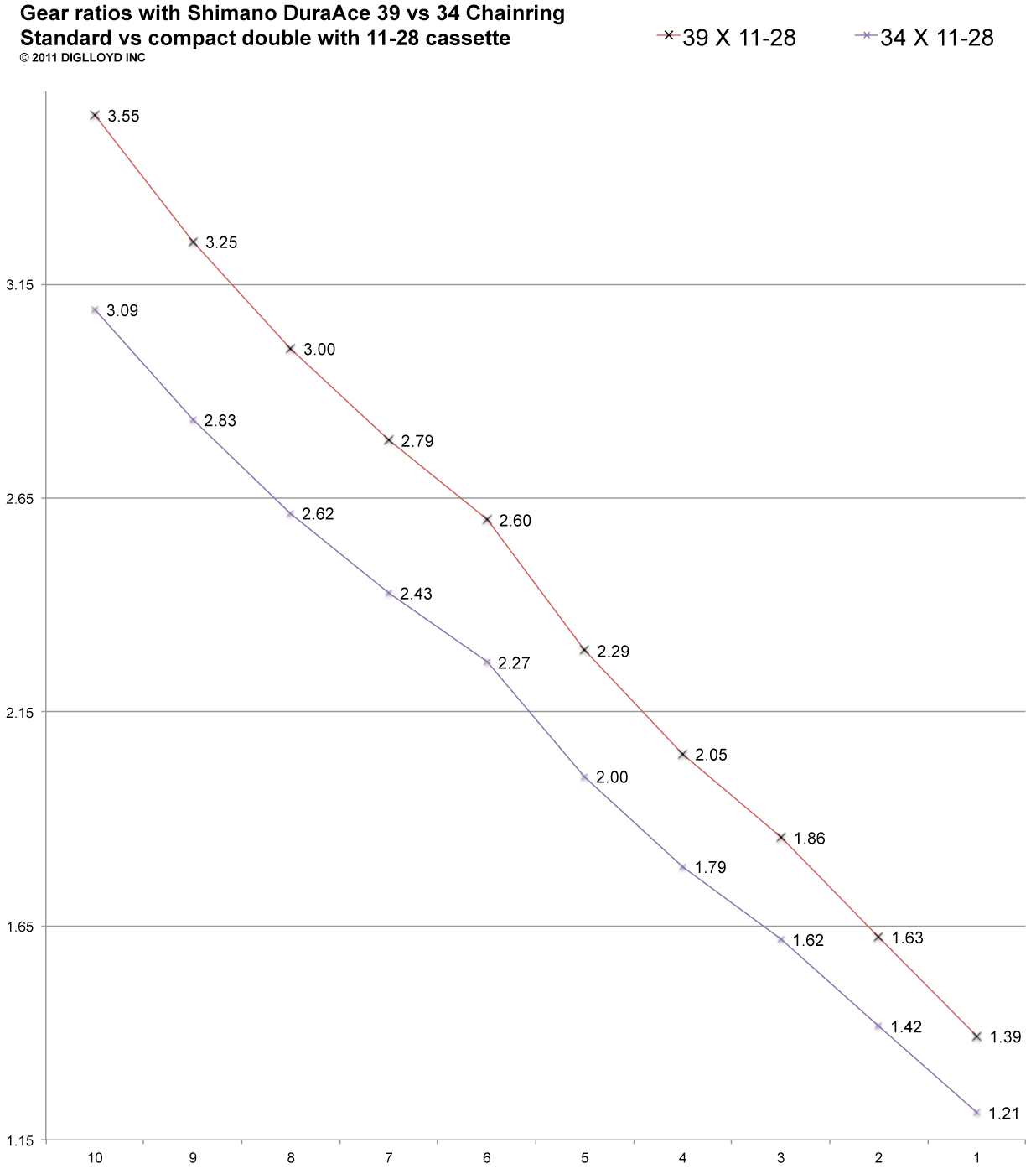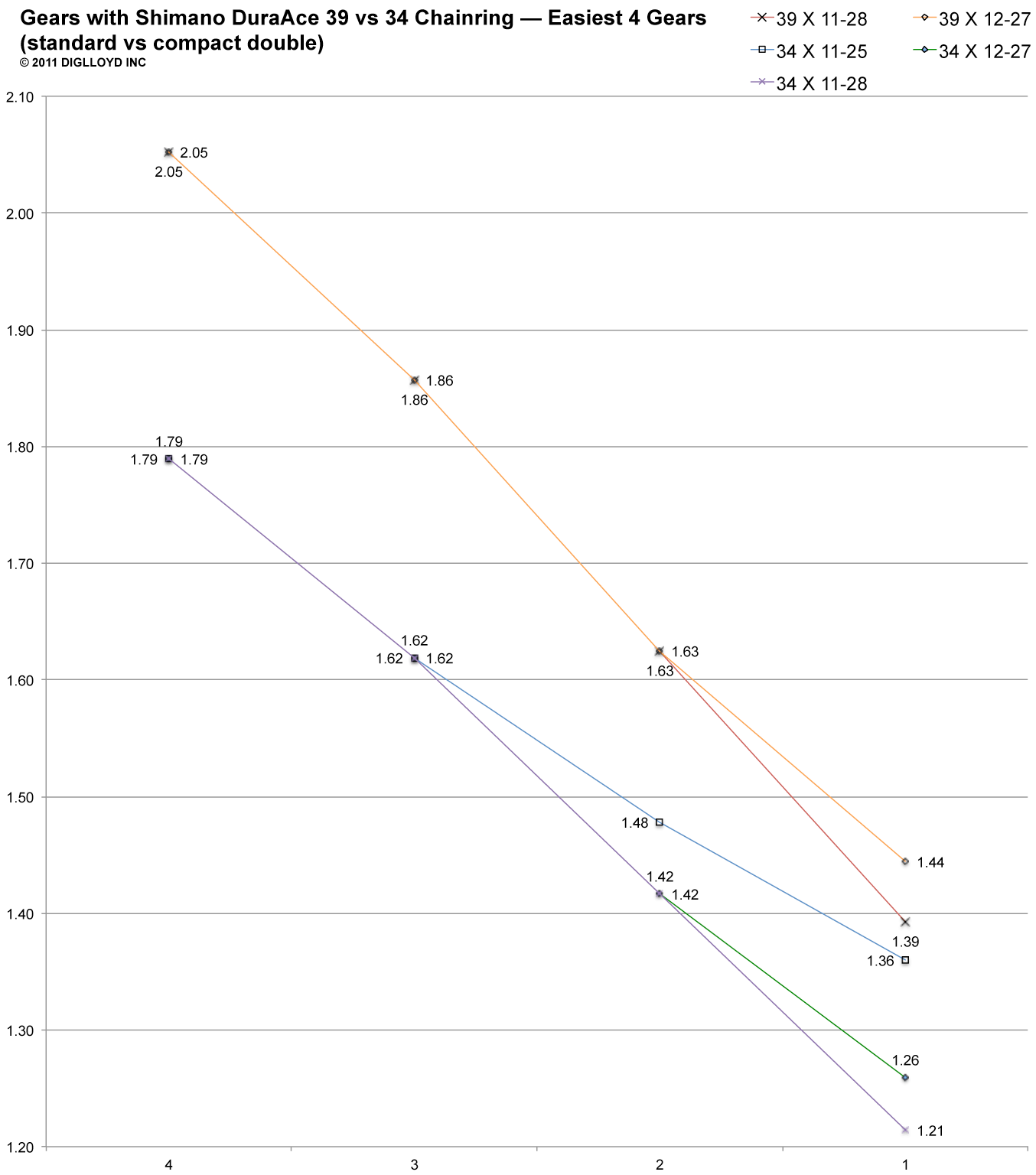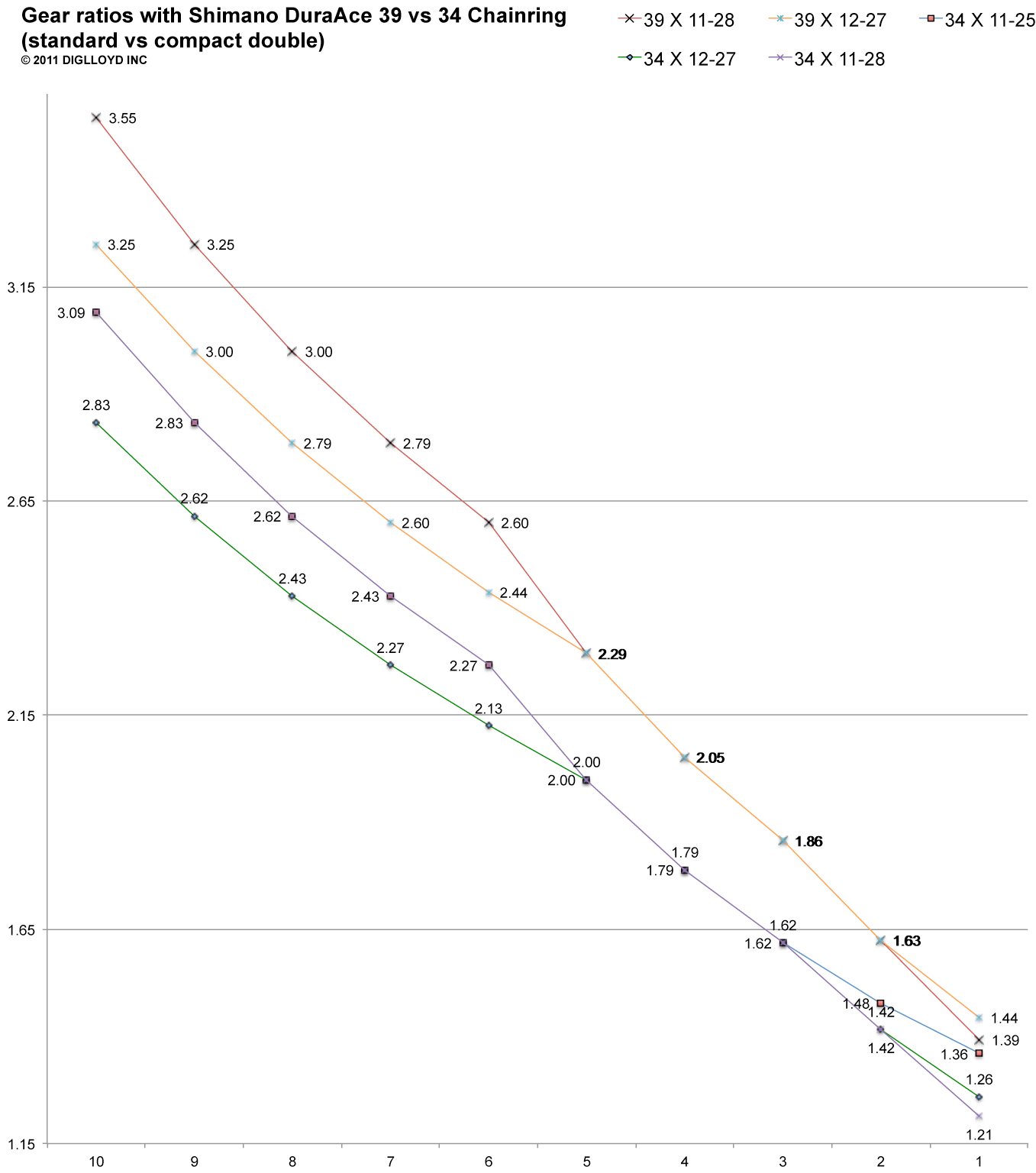
$220 SAVE $130 = 37.0% Western Digital 16.0TB Western Digital Ultrastar DC HC550 3.5-in… in Storage: Hard Drives
|

|

|

|

|
Standard 53X39 or Compact Double 50X34 Chainrings?
When buying a bike, one consideration is which chainrings to choose. I absolutely prefer a double front chainring, having ridden a triple front chainring for years, which I deem too fiddly. Plus, it won’t work with DI2 electronic shifters as far as I know.
See pricing at Amazon for Shimano DuraAce @AMAZON.
While there are some other atypical standard double choices, the choice boils down to either:
- 53 X 39 standard double chainrings or
- 50 X 34 compact double.
Along with an appropriate cassette to match to it— I recommend the 11-28 for anyone doing much climbing.
Update May 28, 2011: my 2nd Trek Madone 6.9 SSL uses a 50 X 34 compact double, and I can say that the friendlier 50 X 34 gearing is of great value on climbs, so much so that I suspect that eventually I’ll convert my first bike to a 50 X 34 also. I’m running the 11-28 cassette on both bikes.
Compact double advantages
The compact double has some key advantages:
- The compact double weighs a bit less, and allows a smaller cassette for similar gearing, thus cutting weight from the cassette also (e.g., a 25-tooth gear instead of 28).
- The loss of 3 teeth on the big front ring can be compensated for with an 11-tooth sprocket, versus a 12-tooth for a 53 ring. At any rate a 53/12 is a ratio of 4.42 versus 50/12 for a ratio of 4.17 or 50/11 for a ratio of 4.55.
- Considerably lower and more tightly-spaced gearing is possible with the 34-tooth front ring, making an 11-25 a very attractive option, and allowing a 12-27 for when really low gearing is needed. Even a 12-23 is a bit easier than a 12-28 on a standard double.
Gear ratios
For the graph below, the gear ratio is plotted: higher values are more difficult pedaling. For steep climbs, concentrate on the right side with gears 5/4/3/2/1.
The 11-25 has a tight spacing for cruising in just the right gear on moderate terrain.
Dropping to a 50x34 + 12-27 offers a very comfortable 1.26 ratio, a big help on really steep climbs. The 53x39 + 11-28 offers a more difficult 1.39, which is 10% harder, a crucial difference for some riders on very steep climbs.
In short, use of a compact double offers a big plus for both climbing and for cruising in just the right gear. Even an 11x23 cassette might make sense for some riders where there are modest hills.
About 1.3 gears more for a compact double — 14%
As the graph below shows, a compact double essentially moves the gearing down one gear, giving you one more gear for climbing with a 34 X 28 instead of a 39 X 28 — a 14% difference in gearing that might be enough to save your quadriceps and knees.
The downside is that the 50 ring yields about 6% less top end: 50 X 11 instead of 53 X 11 — a fair trade since ferw riders spend much time in the 11-tooth ring.


All 10 gears
The graph below shows the entire gear range in the small front chainring (39 or 34 teeth).

Seagate 22TB IronWolf Pro 7200 rpm SATA III 3.5" Internal NAS HDD (CMR)
SAVE $100



